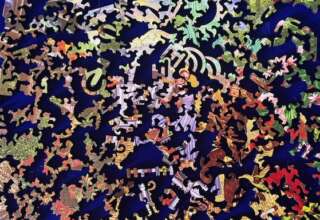
As Menakem (2017) has noted in his recent widely read analysis of trauma, the key to processing trauma is acknowledgment and processing of the pain associated with the trauma. This leads to “clean pain”—to the steps identified by Kubler-Ross and Christakis. When pain associated with trauma is not processed, then it remains as an untreated wound (“dirty pain”) that can continue to do physical and psychological damage. If Menakem is accurate in his assessment, then American openness to therapy and collective organizational consultation would suggest an invaluable service being provided in the processing of the pain, so that it might be clean and available for analysis and resolution in both personal and collective settings. There can be sociopetal coming together and healing one another even in an individualistic American society.
This level of success in American psychological services during COVID-19 is important, for we are justified in identifying the powerful VUCA-Plus forces compounded by specific COVID-related stresses as the prime ingredients for creation of physical and mental disorders associated with chronic traumatizing stress. Furthermore, we know that these disorders can be shared by all members of a specific society when the source of the traumatizing stress is experienced by the entire society (as is the case with VOCID-19). I once again reference the pioneering work of Richard Lazarus (Lazarus, 1966; Lazarus and Folkman, 1984) I remember some comments attributed to Lazarus regarding his studies of ways people appraise and cope with stress.
Lazarus and his colleagues at the University of California first studied coping mechanisms among Americans (mostly, as is often case, using college students). He traced the ways in which arousal levels went up after subjects were subjected to a mildly distressful stimulus (usually excerpts from a shocking subincision rites documentary) then engaged various coping mechanism to reduce the arousal level. Lazarus then apparently took his study to Japan and conducted the same stress-inducing experience. He found that arousal levels went up and then stayed up. In fact, the levels of arousal stayed up to such a level that Lazarus had to suspend his studies—given the ethical problems associated with inducing long lasting stress and high levels of arousal in experimental patients.
Lazarus was said to have speculated that his Japanese subjects were suffering from the lingering trauma of World War II (only 10 years after his study was being conducted) and would not only trigger faster when exposed to a stressful stimulus (which did occur) but also remain stressed for a long period of time. They could not successfully engage the coping mechanisms deployed by the American subjects (who were not directly or even vicariously exposed to the trauma of World War II). While I have not been able to confirm all these facts, it is interesting to speculate that Richard Lazarus might have stumbled on a collective post traumatic symptoms which is vulnerable (as is individual PTS) to stress.
Even without confirmation of the information I have presented about Lazarus, it is important to recognize that collective posttraumatic syndrome might be present in certain societies. A study conducted by the American Psychological Association clearly indicates that here is a collective elevation of stress in the United States resulting from the virus (APA, 2020). A similar elevation in stress can be expected in other countries. However, is this stress in any way elevated and do levels of arousal remain high in societies that have been exposed to collective trauma (such as warfare, major domestic upheaval and violence)? Is there a collective PTS operating in Israel that is still not present in the United States?









